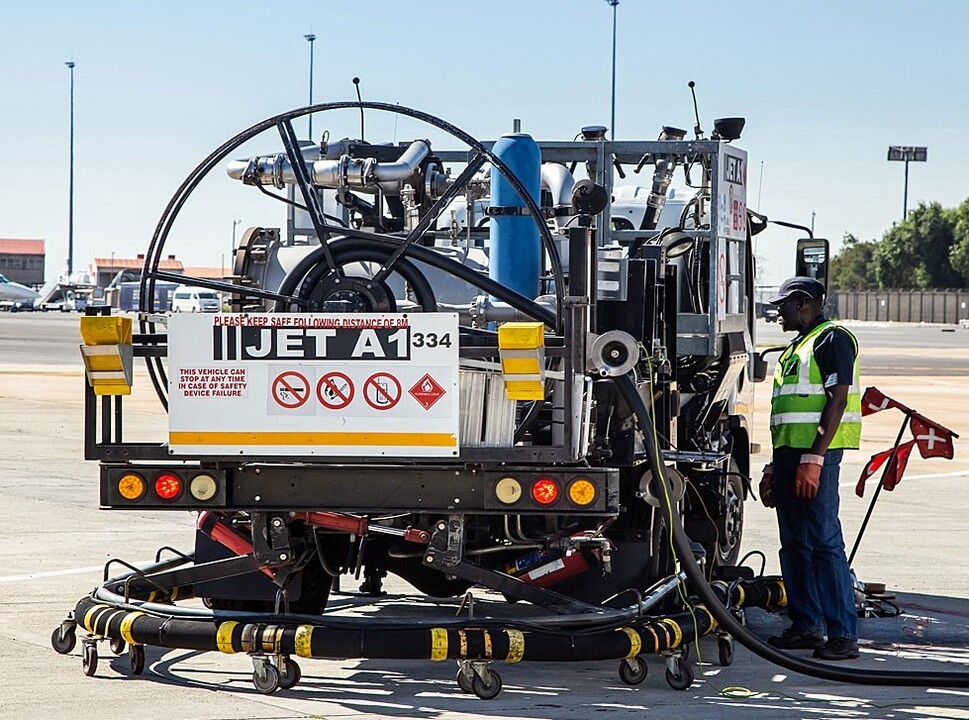- 24 Dec 2021
- Fabrizio Poli
- Aircraft Development
A Guide to Sustainable Aviation Fuel
What is Sustainable Aviation Fuel, and what needs to happen for it to become mainstream within Business Aviation (and the wider aviation community)? Fabrizio Poli explores…
Back to Articles
Sustainable Aviation Fuel (SAF) is an alternative to traditional jet fuel. But how is it produced, how safe to use is it, and what needs to happen for it to really catch on within the Business Aviation industry?
SAF is made by blending conventional kerosene with renewable hydrocarbon. Because it is certified as ‘Jet-A1’ fuel, no modifications are required for aircraft to use it. This mixture can be handled the same way as jet fuel, so there is no need for changes in fuelling infrastructure, nor aircraft modifications. Any aircraft certified for using the current specification of jet fuel can use SAF.
SAF is currently more expensive than traditional jet fuel, but some companies are willing to pay extra if it means helping reduce our carbon footprint. As more research is done, and as technology advances, SAF will become increasingly efficient and, in return, it will become cheaper for customers.
Following are some quick facts on SAFs, courtesy of IATA:
- Over 370,000 flights have taken to the skies using SAF since 2016
- 100 million litres of SAF were expected to be produced in 2021
- SAF can reduce emissions by up to 80%, during its full lifecycle
- Around 14 billion litres of SAF are in forward purchase agreements
What are the Economic & Social Benefits of SAF?
Sustainable Aviation Fuel is mainly produced from feedstocks, and therefore can be sourced worldwide across several different feedstocks that can be produced on the large amounts of land that is unviable for food crops.
This can simultaneously reduce the exposure to fuel cost volatility that comes with having a single energy source, while introducing a new industry (sustainable aviation fuel production) to developing nations.
How Much Does SAF Cost?
The main challenge to Sustainable Aviation Fuel will be ensuring an adequate supply of sustainable feedstock at a competitive price. The market price of SAF today is still three- to five-times higher than for conventional jet fuel.
There is also a limited production capacity available, of around 0.1% of total aviation fuel consumption. Nevertheless, additional production volume is expected. Companies such as SkyNRG and Neste have already announced plans to install new SAF production facilities across Europe.
Fuel costs form a significant proportion of an aircraft’s operating cost, meaning price volatility of crude oil affects long-term planning. This is a barrier to entry to the market. Indeed, kerosene is used in the blending process for SAF, therefore any changes in prices could impact the supply of SAF on the market.
In Europe, the typical price of fossil-fuel based kerosene is €600 per ton, compared to SAF, made from cooking oil, which could range anywhere between €950 and $1,015 per ton. In order to see the benefits of SAF realized in full, the price of SAF must be nearer to, or even match, the cost of fossil fuels.
What’s
Refining plants can easily switch between SAF and diesel production. However, due to the stricter specification for jet fuel, production of SAF is more expensive.
Other cost-drivers include feedstock availability, supply chain, and logistics which are not yet matured. Generally, with the limited current infrastructure, and without the economies of scales, price per unit of production is higher than conventional jet fuel.
SAF: A Road Map for the Future
All of the above factors play a part in the limited supply of Sustainable Aviation Fuel to meet the total industry demand (less than 1% according to ATAG).
To meet the demand, incentives and global policies must be introduced, including:
United States: Renewable Fuel Standard (RFS) and Low Carbon Fuel Standard to support new technology production plants, and provide incentives for producing/using SAF.
Europe: The Renewable Energy Directive (II) (RED II) (2020-2030), a 1.2X multiplier will be applied in the production of SAF instead of road transportation fuel (i.e. an investment of public or private funding will yield 1.2 x or 20% increase in economic output).
With the need to rapidly decarbonize between now and 2050, it is essential to ensure the initial commercial sustainable aviation fuel plants come on-line in the next few years, if there is to be any chance of scaling up this technology for the future.
Much depends on how emerging technology deployment is supported.
Reducing costs over the long-term will require investment in advanced technologies to process feedstocks more efficiently, on a greater scale, and investment in the development of sustainable and scalable feedstock options. However, in the short-term, interim support from governments and other stakeholders through policy incentives is needed. This support needs to be part of a long-term framework to give investors the confidence to make the big investments required to grow supply.
Where Can SAF Be Found, Currently?
At present, there are 38 airports reported by ICAO as having ongoing SAF deliveries. There are then an additional 15 airports that receive batch deliveries.
Sustainable Aviation Fuel has seen a significant rate of growth in the past seven years; growth that is expected to continue exponentially. Interestingly, around 50% of all airports around the world supplying SAF have started to do so during 2021.
In terms of SAF production figures, it is expected that 2025 production levels will be around 17 times greater than 2020 production levels.
B
One of the business jet OEMs leading the way with the uptake of Sustainable Aviation Fuels is Gulfstream. Since March 2016, Gulfstream has used more than 1.2 million gallons of SAF in place of conventional jet fuels. By December 2019, it achieved the milestone of flying its corporate aircraft more than 1 million nautical miles on SAF.
Every gallon of SAF used by Gulfstream’s Savannah-based fleet saves at least 60% in carbon dioxide emissions on a life-cycle basis, versus petroleum-based jet fuel. Gulfstream has used a 30/70 blend of low-carbon, drop-in SAF and Jet-A in operations at its Savannah headquarters since 2012. To date, it has used more than 980,000 gallons of the SAF blend, reducing carbon dioxide emissions by more than 1,700 tonnes.
Indeed, Gulfstream’s use of SAF has encouraged others to embrace this environmentally friendly fuel. In March 2019, it completed the first sale of SAF to a Gulfstream operator.
Nearly 20 other Gulfstream operators have expressed interest in obtaining, and using their own SAF supply, and Gulfstream has worked to connect them with the World Energy refinery. In 2020, Gulfstream also started to offer the fuel at its service center at Van Nuys Airport in California.
In October 2019, Gulfstream flew carbon-neutral for the first time, taking five SAF-fuelled company-owned jets filled with passengers from Savannah to Las Vegas. The offsets represented more than 200% of the carbon emitted during the trip.
Meanwhile, Gulfstream also designs its aircraft with efficiency in mind. When the industry goals were established in 2009, the Gulfstream G450 and G550 were baselines. The Gulfstream G500 and G600 both fly [nearly 30 knots] faster than the G450 and G550, featuring larger cabins. Offering the same fuel burn as their predecessors, these new-generation jets offer a 32% improvement in fuel efficiency.
SAF’s Future: Technology & Cost are the Keys
More airports are needed to provide Sustainable Aviation Fuels, helping to driving the price down. This will encourage more aircraft operators to use biofuels.
Few would argue that making these fuels more available and developing technology that reduces carbon emissions is the way forward.
More information from www.bizjettv.com and www.orvilleaviation.com
Related Articles
- 24 Sep 2021
- Fabrizio Poli
- BizAv Market Insight
- 17 Mar 2021
- AvBuyer
- Engines - BizAv


